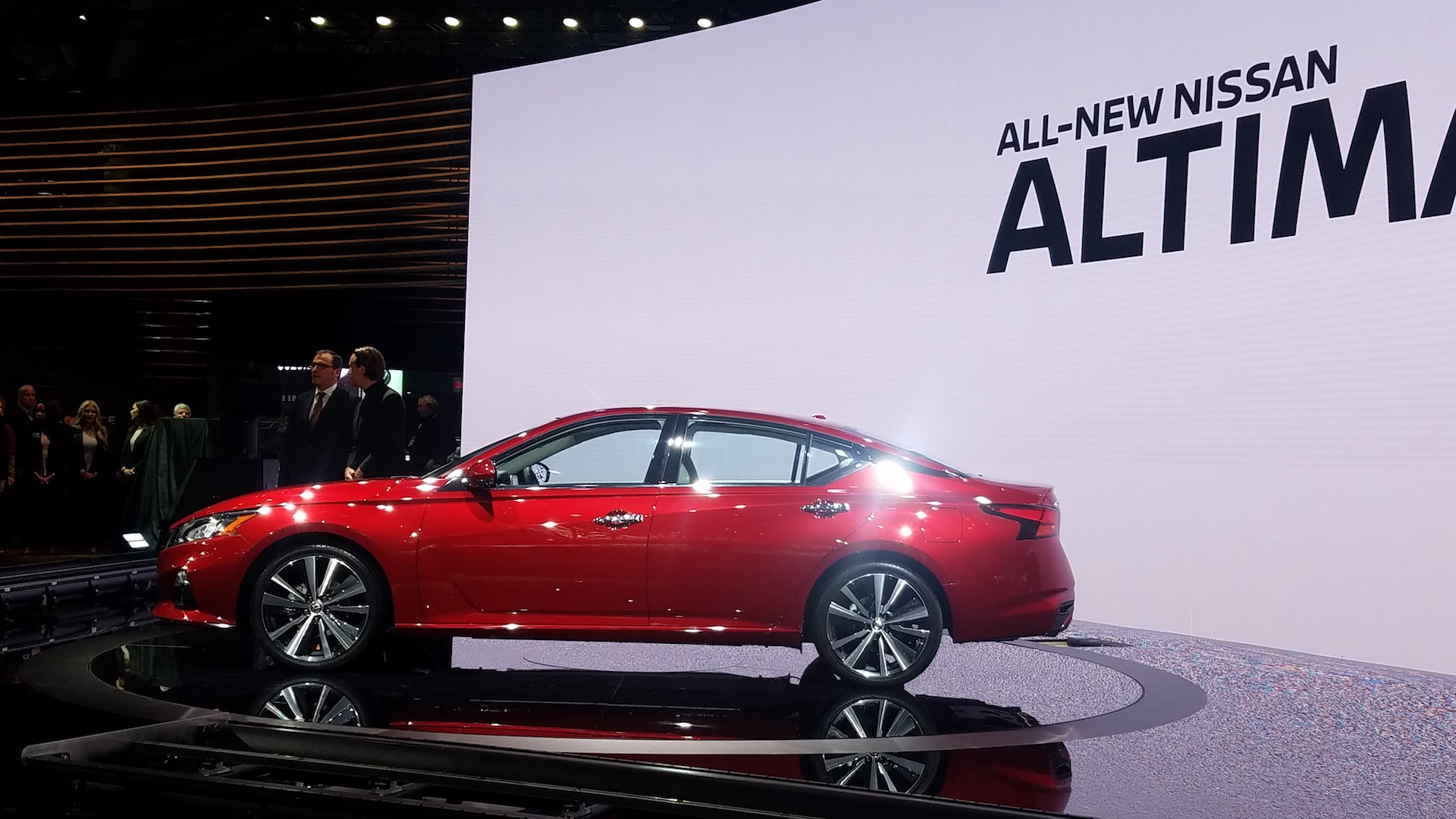Denis Le Vot, the new chairman of Nissan North America, brought a message to the New York International Auto Show: The family sedan isn’t dead—yet.
That message came wrapped in the form of the 2019 Nissan Altima. Built in Tennessee and Mississippi, and still a staple of the American car buyer—with 5.6 million sales here since 1993—this redesigned Altima seems formidably equipped to narrow the sales gap with the Honda Accord and Toyota Camry. That begins with something you can’t get on Accord or Camry: An optional AWD system that Nissan will offer on all five trim levels of the Altima, as opposed to the Ford Fusion and other sedans that only offer four-wheel traction on upper-tier editions. And Le Vot said that the lack of available AWD on affordable sedans is one reason why so many Americans are fleeing the segment for crossover SUV’s.

That AWD system seems like a smart move, one that’s sure to be a key selling point in the Northeast and other wintry climes. Yet this Altima brings much more to the table. That includes the world’s first and only variable compression turbocharged engine (first seen on the Infiniti QX50). That VC engine, which adjusts cylinder pressure on the fly to boost fuel economy, will also crank up 248 horsepower and 273 pound-feet of torque when the Altima reaches showrooms this fall. Nissan will also offer a direct-injection, 2.5-liter four-cylinder with 188 horsepower and 180 pound-feet of torque. Forget a stick, though, or even a conventional torque-converter automatic: Every Altima will transfer power to wheels via the brand’s Xtronic CVT transmission.
The tech onslaught continues with Nissan’s well-engineered, semi-autonomous ProPilot system. That’s mated to a slew of Advanced Driver Assistance Systems (ADAS), including automated emergency braking for vehicles or pedestrians; lane departure, blind spot and tired-driver warnings; rear cross-traffic alert with automated rear braking; 360-degree camera views, automated high beams and even traffic sign recognition. Michael Bunce, Nissan North America’s vice-president of product planning, said the ProPilot system will be expanded to operate in cities by 2020, not just on highways. The Altima’s version has been recalibrated for even-more-natural operation, he said.

“This is a machine driving a car,” Bunce said. “But you want it to feel like a human,” in terms of acceleration, deceleration and automated steering in a lane.
Poking my head inside the top-shelf Altima Platinum on the New York stage, I immediately realized what the cabin felt like: A BMW, from the display screen perched atop the slender instrument panel to that IP’s shape, wood and glowing metallic trim. That optional wood trim is embedded with metal fibers, and damn if it doesn’t look like a mildly more affordable take on a BMW 5-Series or X5.
“Hey, whatever it takes,” said a smiling Dan Passe, Nissan spokesman, when I noted the Bavarian resemblance. Whatever the source, the Altima definitely continues Nissan’s recent streak of markedly improved interior designs, as on the Nissan Leaf EV. The airy cabin benefits from a two-inch wheelbase stretch, expensive-looking driver’s gauges, and the brand’s comfy “Zero Gravity” seats designed to reduce stress on human bodies.

As for the exterior, this Altima looks sober, sophisticated and fairly conventional. But for a Nissan whose design department often flirts with goofy or gawky, conventional is not a bad thing. The brand’s V-Motion grille, floating roof and slim boomerang tail-lamps all seem to come together here in a way they don’t on the larger Maxima. There’s definitely some personality, too, especially in the Altima’s wavy shoulders and a character line that rises sharply through the doors before tucking into the tail-lamps.

The bespectacled, French-accented Le Vot came aboard Nissan only recently, after 27 years at its partner Renault.
“After all those years, I jumped at the chance to become chairman of Nissan North America,” he said. Le Vot emphasized that despite an exodus from traditional four-doors Americans are still buying 5 million sedans a year, with 1.6 million of those being family mid-sizes. Nissan moved about 255,000 Altimas last year, good for fifth place among all car models in America. As for those attention-hogging crossovers, Nissan’s Rogue moved a remarkable 403,000 units in 2017, also ranking it fifth among all truck and SUV models. The Rogue may be winning the brand sales battle, but Nissan has no intention of shortchanging its sedans, Le Vot said, even as other brands retreat from the segment.
“Nissan is very good at both (sedans and SUV’s),” Le Vot said.
Bunce offered his own sedan pep talk: In American households with two cars, 56 percent of those households still own at least one sedan, he said. Only three percent of those households own a pair of crossover SUVs. Those sedan numbers, of course, will likely shrink in coming years if crossovers continue their relentless march to dominance. Yet in market surveys of 18-to-24 year olds, Bunce said, sedans are their No. 1 preference in automotive body styles.
“I think there’s a bit of a pushback against crossover SUV’s,” he said. “There’s a perception that they’re a mommy mobile.”
